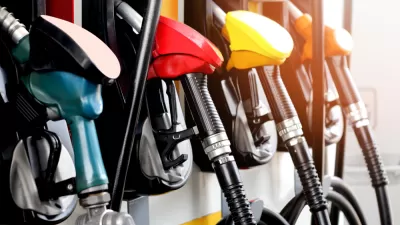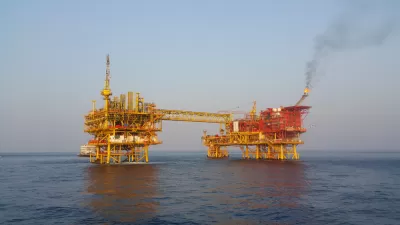Oil prices are now at a 12-year low. Prices have been very consistent this year: they have dropped every day. As they slide to going below $30 a barrel, service stations could be selling gasoline at $1 per gallon, a price not seen since 1999.
"The collapse in commodity prices pushed oil futures even lower on Monday [Jan. 11] and analysts predicted that the slide was far from over, Jad Mouawad reports in The New York Times," writes Amie Tsang in The New York Times' "Morning Agenda."
Oil prices were at a 12-year low on Tuesday, with West Texas Intermediate [WTI] near $30 a barrel after a decline of more than 5 percent overnight. Brent crude [the main international benchmark] was just under $31 a barrel by the Asian afternoon, as The Wall Street Journal reports."
Unlike the stock market, which has up and down days this year, though mostly down, the oil futures market has been far more consistent in a gloomy sense: it has dropped in price every day in 2016, writes Mouawad, "and analysts predicted that the slide was far from over."
While prices now and 12 years ago may be the same, little much else is, writes Nicole Friedman for The Wall Street Journal.
The last time oil was at these levels, prices were on their way up, not down. China’s oil imports were rising at a double-digit-percentage pace to fuel a rapidly expanding economy. The Organization of the Petroleum Exporting Countries (OPEC) was limiting output to keep prices aloft. And Iraq was repairing wells that were ravaged by the U.S. invasion.
Translating the rapid descent in oil prices to gas pump prices, Douglas A. McIntyre of 24/7 Wall St. writes in USA TODAY on Jan. 10, "As oil prices fall, and refinery capacity stays strong, the price of gas could reach $1 a gallon in some areas, a level last reached in 1999."
In "The Takeaway" heard on many public radio stations, host John Hockenberry speaks with guest David Goldwyn, former State Department special envoy for international energy affairs and currently a nonresident senior fellow in the Energy Security and Climate Initiative at the Brookings Institution.
Goldwyn confirms that oil is likely headed below $30 a barrel, "but if there is a production cut," referring to an engineered cut by OPEC, "prices could be in the $60s," he says in the audio tape. "But the politics don't point in that direction."
The only producers who can drill oil profitably in the $30 range are the Arab OPEC nations along the Persian Gulf, like Kuwait, Saudi Arabia, and the United Arab Emirates.
Goldwyn adds. However, as we've seen in Saudi Arabia, the low prices can cause huge losses for governments that have budgets based on higher oil revenues.
Goldwyn adds more insight into where oil prices are headed in the long run—probably higher as the developing world not enough has been done to reduce demand.
Click here for current WTI futures and daily prices.
FULL STORY: Morning Agenda: No Bottom in Sight for Oil Prices

Study: Maui’s Plan to Convert Vacation Rentals to Long-Term Housing Could Cause Nearly $1 Billion Economic Loss
The plan would reduce visitor accommodation by 25,% resulting in 1,900 jobs lost.

Alabama: Trump Terminates Settlements for Black Communities Harmed By Raw Sewage
Trump deemed the landmark civil rights agreement “illegal DEI and environmental justice policy.”

Why Should We Subsidize Public Transportation?
Many public transit agencies face financial stress due to rising costs, declining fare revenue, and declining subsidies. Transit advocates must provide a strong business case for increasing public transit funding.

Paris Bike Boom Leads to Steep Drop in Air Pollution
The French city’s air quality has improved dramatically in the past 20 years, coinciding with a growth in cycling.

Why Housing Costs More to Build in California Than in Texas
Hard costs like labor and materials combined with ‘soft’ costs such as permitting make building in the San Francisco Bay Area almost three times as costly as in Texas cities.

San Diego County Sees a Rise in Urban Coyotes
San Diego County experiences a rise in urban coyotes, as sightings become prevalent throughout its urban neighbourhoods and surrounding areas.
Urban Design for Planners 1: Software Tools
This six-course series explores essential urban design concepts using open source software and equips planners with the tools they need to participate fully in the urban design process.
Planning for Universal Design
Learn the tools for implementing Universal Design in planning regulations.
Smith Gee Studio
Alamo Area Metropolitan Planning Organization
City of Santa Clarita
Institute for Housing and Urban Development Studies (IHS)
City of Grandview
Harvard GSD Executive Education
Toledo-Lucas County Plan Commissions
Salt Lake City
NYU Wagner Graduate School of Public Service




























